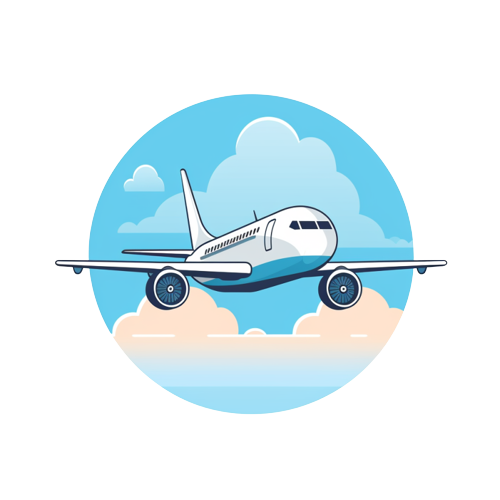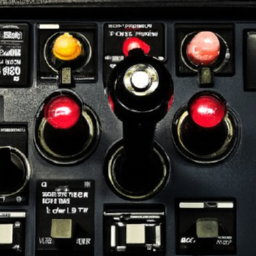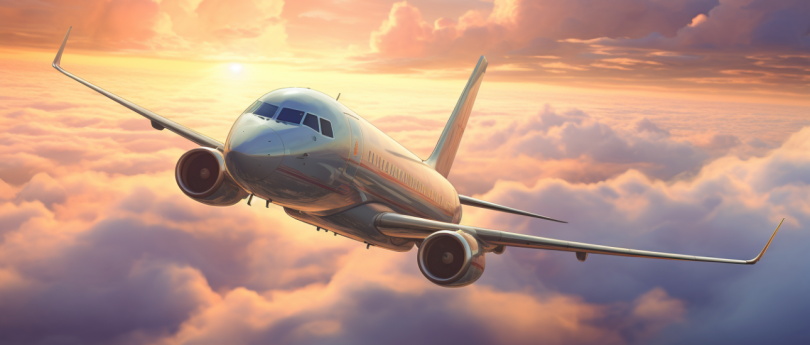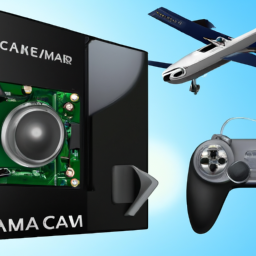In this article, we’ll explore the possibilities of flying different planes in a flight simulator and what limitations you might encounter. You’ll learn about the wide range of aircraft options available in most simulators, from small propeller planes to large commercial jets. We’ll also discuss the factors that may affect your ability to fly specific planes, such as the simulator’s software capabilities and the availability of add-on aircraft. By the end, you’ll have a better understanding of the vast opportunities for virtual flying in a flight simulator.
Flight Simulator Basics
What is a flight simulator?
A flight simulator is a device or software that replicates the experience of flying an aircraft. It provides a realistic environment for users to practice and develop their flying skills without the risks involved in actual flight. Flight simulators have become increasingly popular among aviation enthusiasts, aspiring pilots, and even experienced pilots looking to improve their skills.
How do flight simulators work?
Flight simulators work by recreating the essential elements of flying, including the aircraft’s controls, instrumentation, flight dynamics, and the visual and audio cues that pilots encounter during flight. These simulators use sophisticated computer algorithms and models to simulate the physics and behavior of aircraft in a virtual environment.
Types of flight simulators
There are different types of flight simulators available, ranging from basic computer software to full-motion simulators used by commercial airlines for pilot training. The most common types include desktop simulators, cockpit simulators, and full-motion simulators. Desktop simulators are the most accessible and affordable, while full-motion simulators provide the most realistic experience.
Limitations of Flight Simulators
While flight simulators offer a remarkable level of immersion and realism, they do have some limitations that need to be considered.
Realistic vs. Simulated Experience
Flight simulators can realistically simulate the experience of flying, but they cannot fully recreate the physical sensations and physiological effects that come with actual flight. The absence of G-forces, vibrations, and other physical feedback can make the simulated experience feel slightly different from the real thing.
Aircraft Availability
Not all aircraft are available for simulation. Flight simulators typically focus on popular commercial airliners, general aviation planes, and military jets. Vintage and historic aircraft may not be as widely available for simulation, depending on the software or hardware being used.
Complexity and Control Systems
Certain aircraft have complex control systems and avionics that may not be fully replicated in all flight simulators. While most simulators provide a comprehensive set of controls, some advanced features, such as fully functional autopilots or advanced navigation systems, may not be available for all aircraft.
Licensing and Certification
Flight simulators can be useful for training purposes, but they have limitations when it comes to obtaining actual flying licenses and certifications. While simulator time can count towards flight hour requirements, actual flight time is still necessary to obtain a pilot’s license or advanced certifications.
Selecting a Flight Simulator
When selecting a flight simulator, you should consider various factors to ensure it meets your needs and preferences.
Considerations for Simulating a Specific Plane
If you have a specific aircraft in mind that you want to simulate, research which flight simulators offer accurate representations of that aircraft. Some simulators specialize in certain aircraft models or types, providing a more detailed and accurate simulation experience.
Compatibility with Different Aircraft Models
If you aspire to fly a variety of aircraft, ensure that the flight simulator you choose offers a wide range of aircraft models to simulate. This will allow you to explore different types of planes and expand your flying experiences.
Available Flight Simulator Platforms
Different flight simulator platforms offer varying levels of realism and features. The two most popular platforms are Microsoft Flight Simulator and X-Plane. These platforms offer a wide range of aircraft, realistic flight physics, and visually stunning environments.
User-friendly Interfaces
A user-friendly interface is essential, especially for beginners. Look for flight simulators that provide intuitive controls and menus, making it easy to navigate and customize the simulation to your preferences. A well-designed interface can enhance the overall simulating experience.
Simulating Different Types of Planes
One of the advantages of flight simulators is the ability to simulate different types of aircraft. Whether you’re interested in commercial airliners, general aviation planes, military jets, or vintage aircraft, there are simulators available to cater to your interests.
Commercial Airliners
Flight simulators focused on commercial airliners, such as Boeing or Airbus models, offer a comprehensive and immersive experience. These simulators include realistic cockpit replicas, accurate flight dynamics, and sophisticated avionics systems.
General Aviation Planes
For those interested in general aviation, flight simulators provide a wide range of general aviation aircraft models. These simulators allow you to practice general aviation procedures, navigation, and instrumentation in smaller aircraft commonly used for private and recreational flying.
Military Jets
Flight simulators dedicated to military jets offer a unique experience for aviation enthusiasts. These simulators replicate the high-performance capabilities and advanced systems found in modern military aircraft, providing an opportunity to simulate combat scenarios and flight maneuvers.
Vintage and Historic Aircraft
While not as prevalent as other types of aircraft, flight simulators do offer options for simulating vintage and historic aircraft, allowing users to experience flying classic airplanes from different eras. These simulators aim to replicate the unique characteristics and handling qualities of these historic aircraft.
Advanced Flight Simulator Features
Flight simulators have evolved over the years, incorporating advanced features that enhance the overall simulation experience.
High-fidelity Cockpit Replication
Modern flight simulators feature highly detailed and realistic cockpit replicas, complete with functional switches, knobs, and gauges. High-resolution displays provide clear and accurate instrument readings, contributing to the immersive experience.
Realistic Flight Physics
Flight simulators employ advanced physics models to accurately simulate the behavior of different aircraft during various flight conditions. These models consider factors such as aerodynamics, weight and balance, and engine performance to provide a realistic flight experience.
Weather and Environmental Effects
Flight simulators simulate various weather conditions and environmental effects, allowing users to experience the challenges of flying in different conditions. Rain, snow, fog, and wind effects contribute to the realism of the simulation and provide opportunities for skill development in adverse weather conditions.
Air Traffic Control Simulation
Many flight simulators include air traffic control (ATC) simulation, which adds an extra layer of realism to the experience. Simulated ATC communication and procedures help users practice proper radio communication and navigating in controlled airspace.
Training and Skill Development
Flight simulators play a crucial role in pilot training and skill development. Whether you’re a beginner pilot or an experienced aviator, flight simulators can provide valuable training opportunities.
Flight Training Programs
Flight simulators are extensively used in flight training programs to practice various flight maneuvers, emergency procedures, and instrument flying. They offer a safe and controlled environment for pilots to develop their skills before transitioning to real aircraft.
Procedures and Emergency Scenarios
Simulators allow pilots to practice standard operating procedures, emergency procedures, and abnormal situations without the risks associated with real flight. This training benefits pilots by developing their decision-making abilities and enhancing their proficiency in handling challenging situations.
Navigation and Instrumentation
Flight simulators allow pilots to practice navigation techniques, including VOR (VHF Omnidirectional Range) and GPS (Global Positioning System) navigation. Simulated instrument approaches and instrument flight rules (IFR) procedures can also be trained, improving a pilot’s instrument flying skills.
Crew Resource Management
Flight simulators facilitate training in crew resource management (CRM), which focuses on effective communication and cooperation within a flight crew. Pilots can practice team coordination, decision-making, and problem-solving in simulated scenarios, improving crew effectiveness and safety.
Enhancing the Flight Simulator Experience
To further enhance the flight simulator experience, users can take advantage of additional features and customization options.
Expanding Aircraft Libraries
Flight simulators often provide the ability to expand the available aircraft libraries through add-on aircraft packs. These packs offer additional models and aircraft types, allowing users to explore a broader range of aircraft and expand their simulation capabilities.
Installing Add-ons and Mods
Users can enhance their flight simulator experience by installing add-ons and modifications (mods). These mods can improve the visual quality, add realistic sound effects, or introduce new features and functionalities, further enhancing the realism and immersion.
Creating Custom Scenarios
Flight simulators provide tools that allow users to create custom scenarios and missions. Users can design their flight plans, set weather conditions, and specify the objectives of a mission, providing endless possibilities for creating unique and challenging scenarios.
Joining Online Aviation Communities
Flight simulators have thriving online communities where enthusiasts can connect, share experiences, and participate in virtual multiplayer flights. These communities offer opportunities to fly with others, participate in events, and learn from experienced simmers, fostering a sense of community among aviation enthusiasts.
Challenges and Achievements
Using a flight simulator presents pilots with challenges and opportunities for personal achievements.
Mastering Complex Aircraft Systems
Flight simulators provide a platform for pilots to master the operation of complex aircraft systems and avionics. Learning to operate advanced systems such as autopilots, flight management computers, and navigation equipment can be challenging but rewarding.
Conquering Difficult Maneuvers
Flight simulators allow pilots to practice difficult maneuvers, such as aerobatics or precision landings, in a safe and controlled environment. Mastering these maneuvers can be a personal achievement that enhances flying skills and builds confidence.
Achieving Certifications and Ratings
Some flight simulator platforms offer virtual certifications and ratings that users can obtain by successfully completing specific training programs or passing virtual exams. Achieving these certifications adds a sense of accomplishment and provides a tangible progression in skill development.
Participating in Simulated Air Races
Flight simulator communities often organize simulated air races where pilots compete against each other in various categories and aircraft types. Participating in these races offers an exciting challenge and provides an opportunity for pilots to showcase their skills.
Real-world Applications
Flight simulators have practical applications beyond recreational use.
Pilot Training and Certification
Flight simulators are an integral part of pilot training and certification programs. They allow aspiring pilots to practice flight procedures, test their knowledge and skills, and gain valuable experience in a safe and controlled environment before transitioning to real aircraft.
Flight Planning and Navigation
Flight simulators are useful tools for practicing flight planning and navigation. Pilots can create flight plans, calculate fuel consumption, and practice pre-flight checks. Simulating navigation procedures allows pilots to practice route planning, waypoint navigation, and instrument approaches.
Aircraft Design and Testing
Flight simulators play a significant role in aircraft design and testing. Engineers and manufacturers use simulators to model aircraft performance, test new technologies, and refine aircraft systems. This process allows for cost-effective and efficient development before physical prototypes are built.
Aeronautical Research and Development
Flight simulators are valuable tools for aeronautical research and development. Researchers use simulators to study human factors, aviation safety, and flight performance, helping to improve aviation practices and advance the field of aeronautics.
Conclusion
Flight simulators offer a versatile and immersive experience that allows users to explore the world of aviation from the comfort of their homes. While there are limitations to the types of planes that can be simulated and the physical sensations that can be replicated, flight simulators provide an invaluable training tool, recreational experience, and a platform for personal achievements. So, can you fly any plane in a flight simulator? While you may not be able to fly any plane, flight simulators offer an incredibly wide range of aircraft models and types, providing users with a vast virtual sky to explore and learn from. Unleash your enthusiasm for aviation and let the limitless skies of the virtual world become your playground. Happy flying!




